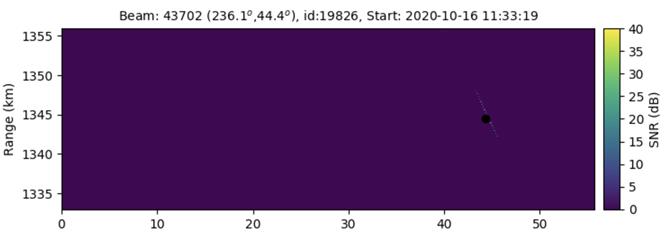
A collision of the two objects would have created a huge cloud of debris as they were hurtling toward each other with a relative velocity of 52,950 kilometres per hour, Space.com reported on Friday. Credits: Twitter/LeoLabs_Space
New York, October 17
In a big relief, two large pieces of orbital debris barely avoided colliding with each other this week although the chances of a smash-up were calculated to be over 10 per cent by California-based space tracking company LeoLabs.
The two bodies, a dead Russian satellite and a spent Chinese rocket body, have a combined mass of about 2,800 kgs, LeoLabs said.
A collision of the two objects would have created a huge cloud of debris as they were hurtling toward each other with a relative velocity of 52,950 kilometres per hour, Space.com reported on Friday.
According to astronomer and satellite tracker Jonathan McDowell, who is based at the Harvard-Smithsonian Center for Astrophysics, a collision of the two objects would likely have led to a “significant (10 to 20 per cent) increase in the LEO (low Earth orbit) debris environment”.
The close approach of the two objects occurred at 1256 GMT on Friday. The two objects were named Cosmos 2004 and CZ-4C R/B.
“Our latest data confirms Cosmos 2004 is still intact. Our final risk assessment showed a computed miss distance of 11 meters (+16/-11 meters at 1-sigma uncertainty). More to come next week as we will share a more detailed risk analysis of this event,” LeoLabs said in a tweet on Friday.
Our latest data confirms Cosmos 2004 is still intact. Our final risk assessment showed a computed miss distance of 11 meters (+16 / -11 meters at 1-sigma uncertainty).
— LeoLabs, Inc. (@LeoLabs_Space) October 16, 2020
More to come next week as we will share a more detailed risk analysis of this event. pic.twitter.com/iTWXyLANrm
A report on space debris by the European Space Agency estimates that there are currently about 34,000 debris objects larger than 10 centimetres, about the size of a softball, currently in orbit.
Since the world’s first artificial satellite, Sputnik 1, was launched into Earth’s orbit in 1957 thousands of additional satellites have joined it.
No indication of collision. 👍
— LeoLabs, Inc. (@LeoLabs_Space) October 16, 2020
CZ-4C R/B passed over LeoLabs Kiwi Space Radar 10 minutes after TCA. Our data shows only a single object as we'd hoped, with no signs of debris.
We will follow up in the coming days on Medium with a full in-depth risk assessment of this event!
While the number of satellites in lower Earth orbit — objects at an altitude between 99 to 1,200 miles above the Earth’s surface — has increased, so has the amount of debris or space junk orbiting above our heads.
The staggering amount of space debris poses a difficult challenge for safely operating spacecraft in lower Earth orbit without collision, according to West Virginia University in the US. IANS
Join Whatsapp Channel of The Tribune for latest updates.


























